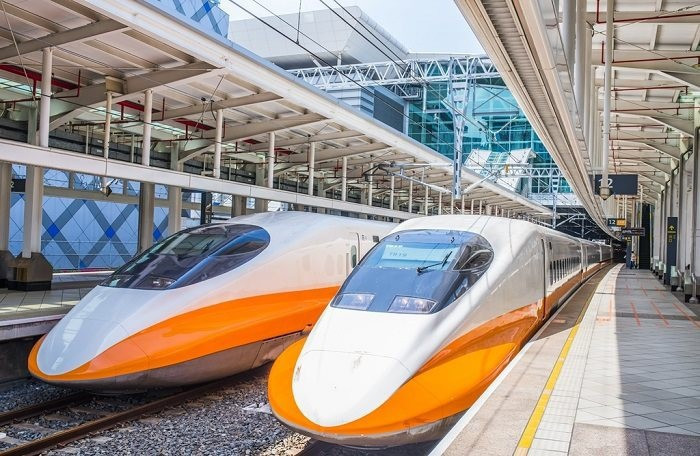
Minister of Construction Tran Hong Minh on May 27, 2025 presented the draft law, highlighting several innovative points to advance railway development.
The draft law includes provisions to maximize resource mobilization from local governments and other economic sectors for railway infrastructure construction, encouraging all organizations and individuals to invest in railway infrastructure through contract models such as BT (Build-Transfer), BOT (Build-Operate-Transfer), BTO (Build-Transfer-Operate), BLT (Build-Lease-Transfer), and BTL (Build-Transfer-Lease).
“Local governments can use their budgets for compensation, resettlement, and construction of certain components of national railway infrastructure,” Minh stated.
The draft also clarifies the responsibilities of entities involved in national, local, and dedicated railway projects.
“These provisions establish a legal framework for railway infrastructure investment, such as building shared bridges for railways and roads (e.g., Lach Huyen Bridge, Can Tho 2 Bridge),” the Minister explained.
The draft also revises and adds provisions on leasing or temporarily transferring the operation rights of state-invested railway infrastructure to attract and diversify railway development and management models, including “public leadership-private management”, “public investment-private management,” and “private investment-public use.”
Railway vehicle registration has been adjusted to suit different railway types, facilitating businesses while reducing administrative procedures like assessments and certifications, yet aligning with international standards.
Notably, some new provisions have been included to promote the railway industry and workforce by prioritizing certain hi-tech railway products, attracting investment to create a market large enough to support auxiliary industries.
Minh said the draft proposes strong decentralization to local authorities for investment and management of railway infrastructure, transferring some powers from the Prime Minister to the Minister of Construction and local governments.
Reviewing the draft law, Le Quang Huy, Chair of the National Assembly’s Committee on Science, Technology, and Environment, agreed with the draft’s title, scope, and applicability, but suggested clarifying its scope for urban railways, high-speed railways, and dedicated railways, as well as railway business and land exploitation near stations.
Regarding investment in railway construction and exploitation of land funds in the vicinity of railway stations, the appraisal agency recommends that the Government seek opinions from competent authorities on mechanisms and policies to ensure strict compliance with Party regulations and State laws.
Regarding support to enterprises to implement special tasks and social welfare, Huy emphasized the need to clarify the criteria for determining reasonable costs and cost compensation procedures for businesses, including verification and inspection methods; and to supplement regulations on information disclosure during the process of financial support for businesses performing special tasks and social security.
The draft law strongly decentralizes power to local authorities in the investment and management of railway infrastructure operations; and transfers some powers from the Government and the Prime Minister to the Minister of Construction and local authorities for implementation, specifically as follows:
Decentralizing the authority to local authorities to carry out 10 administrative procedures on: approving the policy of constructing level crossings; granting and extending Level Crossing Construction Permits for local railways and specialized railways; granting Certificates of Registration of Railway Vehicles; and granting Train Driving Licenses on specialized railways and local railways.
Further, it decentralizes content authority from the Prime Minister to the Minister of Construction to approve railway route and station planning; and assigns the Minister of Construction to specify the term of use of railway vehicles instead of assigning the Government to specify this content as in the 2017 Railway Law.
A seminar, titled “North-South High-Speed Railway: Opportunity for Private Sector Breakthrough in the New Era” was held in mid-May 2025, where participants affirmed that the project is a turning point not only for the railway sector but also a major opportunity for the entire infrastructure construction industry.
Asked which segments of the projects Vietnamese companies can participate in, Tran Thien Canh, director of the Vietnam Railway Authority, said in the field of construction, for transportation infrastructure, Vietnamese enterprises can be 80-90 percent self-reliant.
However, he said that high-speed rail is a “different and big game,” requiring advanced technology, material standards, vibration frequency control, and synchronization. This will require a comprehensive shift in technical expertise and project management.
Two domestic technology conglomerates, VNPT and Viettel, have been tasked with researching and developing operation, signaling, and power systems. They have proactively engaged with international technology and started building product segments to which they can contribute.
In addition, the Hoa Phat Group has established a company to produce high-strength steel for bridges, tunnels, and track foundations in geologically complex areas like the Central region and Central Highlands.
The Vinh